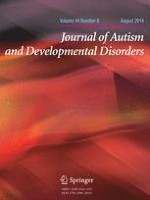01-08-2014 | Original Paper
Movie for the Assessment of Social Cognition (MASC): Spanish Validation
Gepubliceerd in: Journal of Autism and Developmental Disorders | Uitgave 8/2014
Log in om toegang te krijgenAbstract
We present the Spanish validation of the “Movie for the Assessment of Social Cognition” instrument (MASC-SP). We recruited 22 adolescents and young adults with Asperger syndrome and 26 participants with typical development. The MASC-SP and three other social cognition instruments (Ekman Pictures of Facial Affect test, Reading the Mind in the Eyes Test, and Happé’s Strange Stories) were administered to both groups. Individuals with Asperger syndrome had significantly lower scores in all measures of social cognition. The MASC-SP showed strong correlations with all three measures and relative independence of general cognitive functions. Internal consistency was optimal (0.86) and the test–retest was good. The MASC-SP is an ecologically valid and useful tool for assessing social cognition in the Spanish population.
